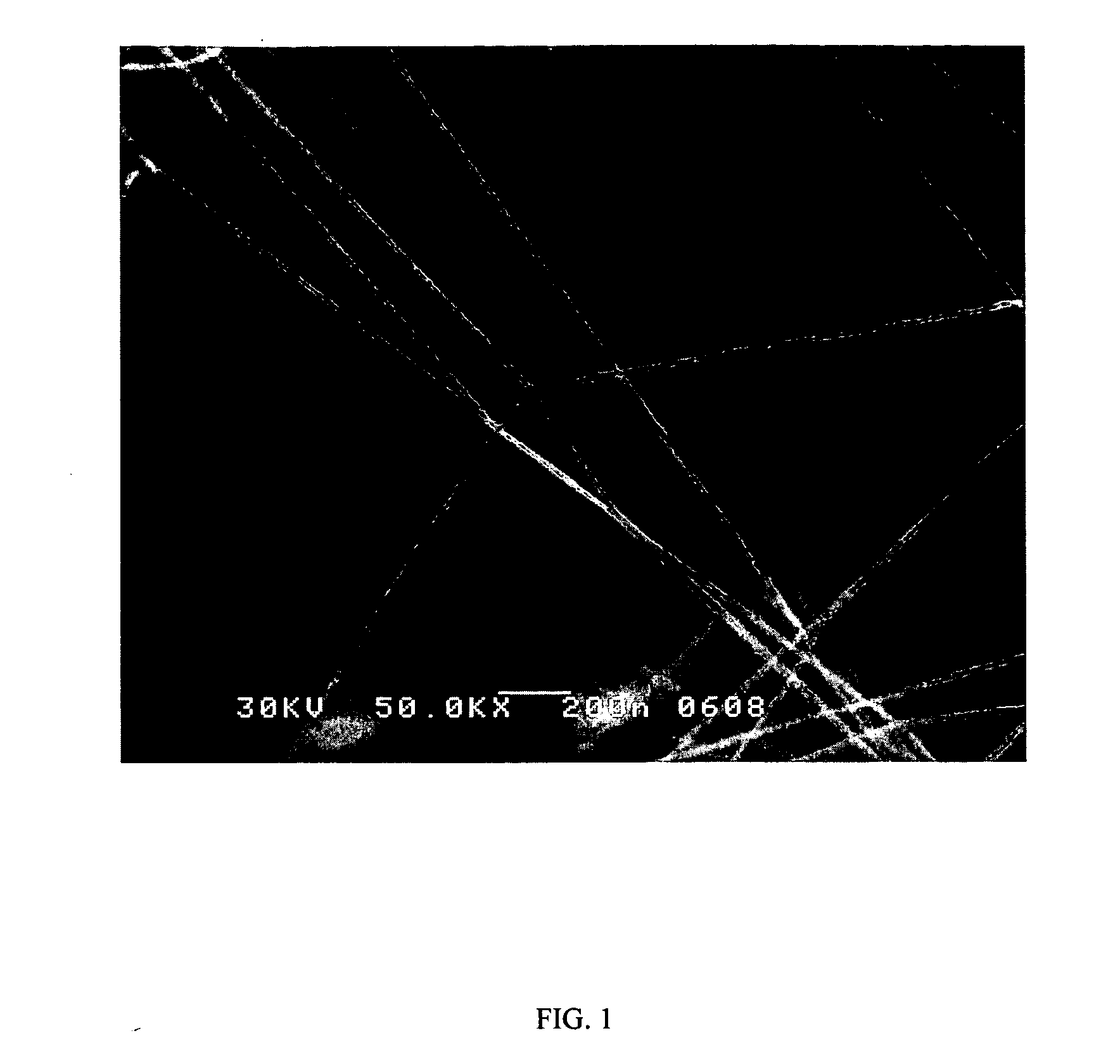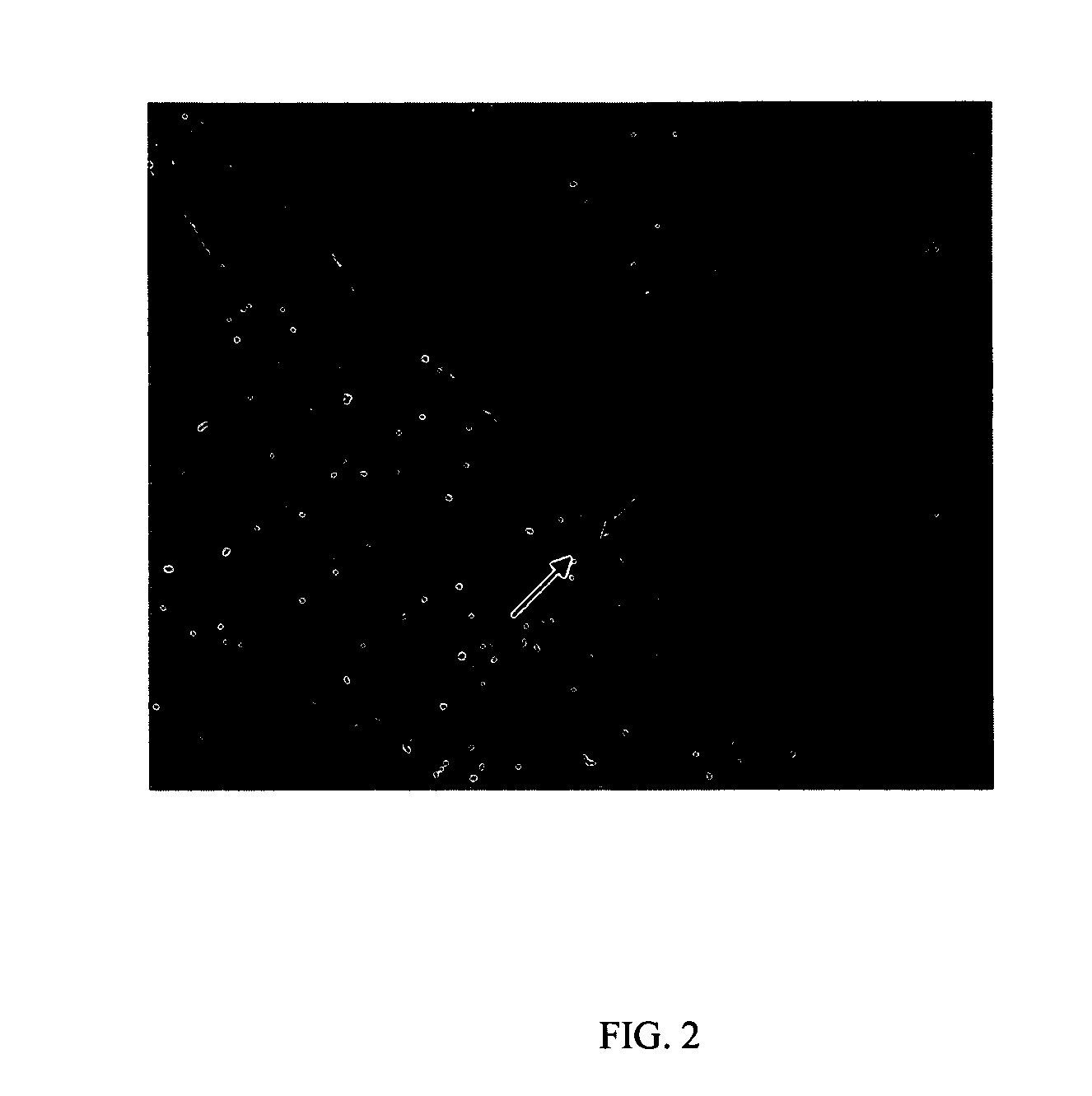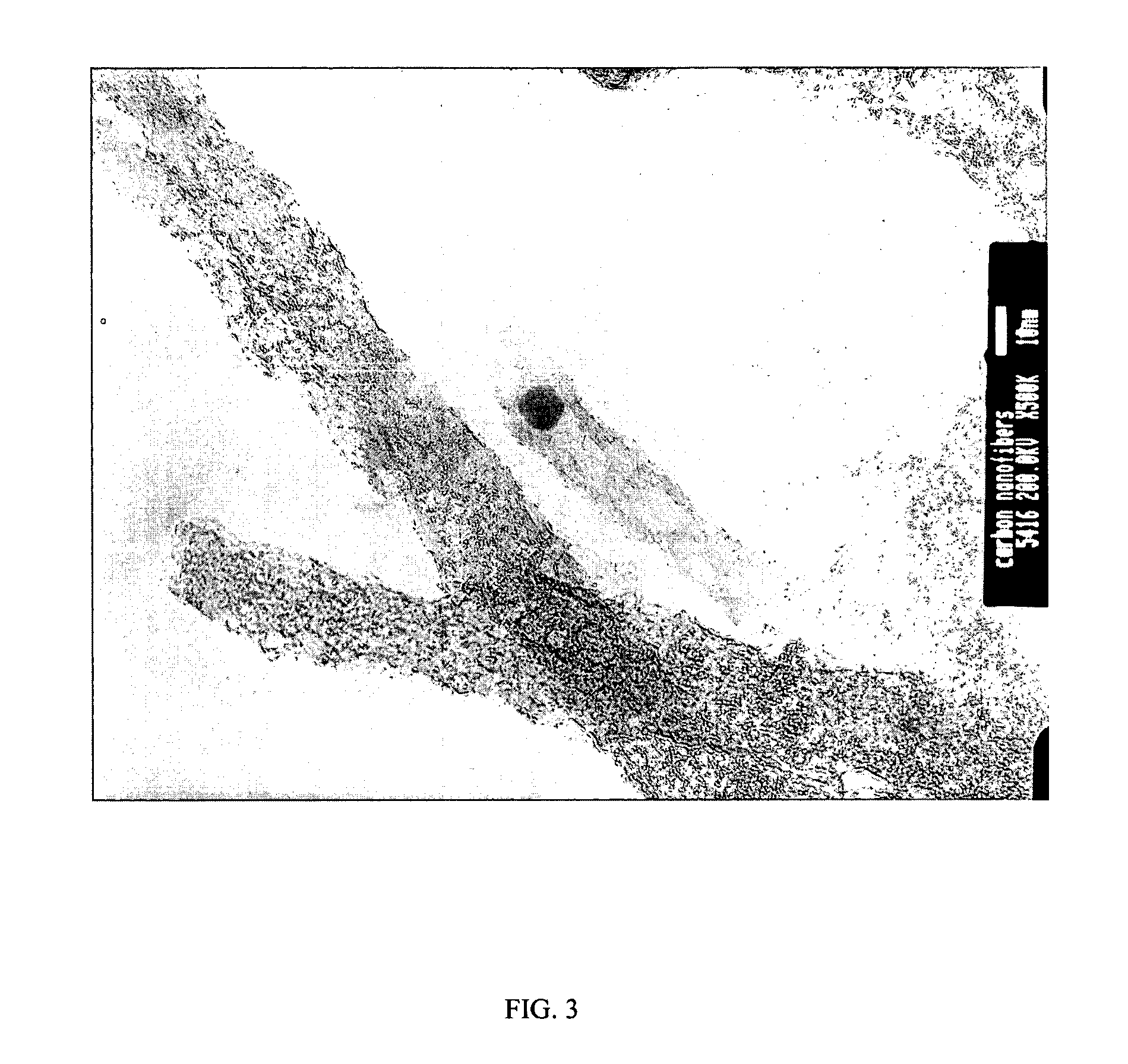Carbon and electrospun nanostructures
a carbon nanotube and electrospun technology, applied in the field of carbon nanotubes, can solve the problems of low particularly expensive single-walled carbon nanotubes, and limited production of carbon nanotubes, e.g., swnt and mwnt, and achieve the effect of increasing the production rate of carbon nanotubes
- Summary
- Abstract
- Description
- Claims
- Application Information
AI Technical Summary
Benefits of technology
Problems solved by technology
Method used
Image
Examples
example
[0020] A solution was formed in N,N-dimethylformamide of 4% by weight low molecular weight polyacrylonitrile (PAN) (Sigma-Aldrich Co.; Molecular Weight: 86,200 daltons), 0.4% by weight polyaniline (PANi) emeraldine base (Organic Technologies, Lot# 17735NC), and 0.1% by weight iron chloride (FeCl2). The solution was ultrasonicated until all of the polyacrylonitrile had dissolved, typically about 8 hours. The solution was electrospun to form nanofibers using parallel plate geometry with a 5 centimeter plate separation, a potential of 15 kilovolts (kV) DC, a solution flow rate of 0.25 milliliters / hour and a current of 160 nanoamperes (nA). FIG. 1 is an FESEM of a 15 nm polyarcrylonitrile precursor to a multi-wall nanotube formed by the method of the invention. The nanofibers were then heated in air at 310° C. for 20 minutes and then placed in a tube furnace with a oxygen-free nitrogen purge, heated to 1,400° C. at 10° C. / min and pyrolized for 5 minutes at 1,400° C. The furnace was then...
PUM
| Property | Measurement | Unit |
|---|---|---|
| Fraction | aaaaa | aaaaa |
| Percent by mass | aaaaa | aaaaa |
| Percent by mass | aaaaa | aaaaa |
Abstract
Description
Claims
Application Information
 Login to View More
Login to View More - R&D
- Intellectual Property
- Life Sciences
- Materials
- Tech Scout
- Unparalleled Data Quality
- Higher Quality Content
- 60% Fewer Hallucinations
Browse by: Latest US Patents, China's latest patents, Technical Efficacy Thesaurus, Application Domain, Technology Topic, Popular Technical Reports.
© 2025 PatSnap. All rights reserved.Legal|Privacy policy|Modern Slavery Act Transparency Statement|Sitemap|About US| Contact US: help@patsnap.com



